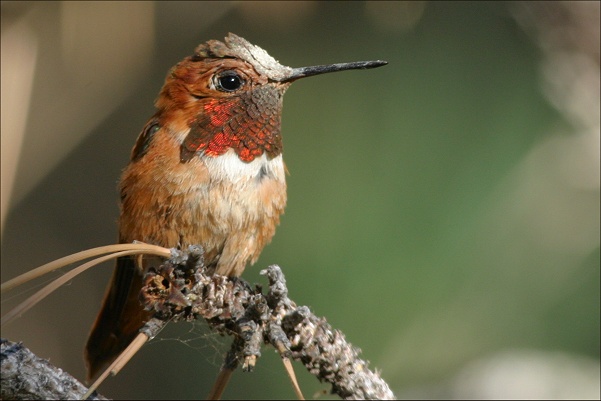
Location: Mt. Laguna, CA
Date: 2004-07-10
Lens: Canon 400mm F5.6

 Rufous Hummingbird
Selasphorus rufus
Rufous Hummingbird
Selasphorus rufus
 Description
DescriptionThe Rufous Hummingbird is a fast and agile flyer. This neotropical migrant and has the longest migration route of all US hummingbirds. It primarily winters in Mexico. Observed in every state except Hawaii, the Rufous is the most widely-distributed hummingbird in North America. Feeds on nectar and insects.
General: 3.5 to 4 inches in length.
Adult Male: Rufous head, back, flanks, rump, and tail. Bright orange-red iridescent gorget. White breast and midbelly area. Occasionally has variable amounts of green on the back and crown, which can make it look similar to the Allen's Hummingbird. Black feet. Long, thin black bill.
Adult Female: Green upperparts. White underparts. Rufous flanks. Small group of red spots at the center of greenish spots on the throat. Tail feathers are rufous with black tips and the outer three feathers on both sides have additional white tips. Black feet. Long, thin black bill.
Immature: Immature male similar to female, except lacks white tips on outer tail feathers and lacks central throat spots. Immature females lack central throat spots.
Coniferous, broadleaf, and riparian woodlands. Mountain meadows.
 Nesting
Nesting2 white eggs. The incubation period is 12-14 days. Fledging occurs 20 days after hatching. The nest is a tiny open cup made from lichens, plant down, and spiderwebs. Typically built on a horizontal branch. They breed at higher latitudes than any other species of hummingbird, from northern California to southeastern Alaska.